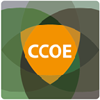US Civil Affairs and Euro-NATO CIMIC Synchronisation project
Scope:
The CCOE promotes and supports the Supreme Headquarters Allied Powers Europe (SHAPE) J9 (CIMIC) initiative to enhance the interoperability of CIMIC or/with CIMIC related elements.
Background of the project:
Since 2014 developments in the Euro-Atlantic security environment caused a sharp shift within the focus of the alliance back on deterrence and defence, including the deployment and operation of US forces on European territory. This includes measures like Enhanced Forward Presence (EFP) and an increase in field exercises/deployments, which means that more US troops - including US Civil Affairs (US CA) - are interacting and cooperating with NATO national governments and NATO forces and by those representatives of sovereign nations more frequently.
US Civil Affairs and Euro-NATO CIMIC Synchronisation project:
CCOE CIC Branch realised the necessity to reflect on the developments within the security environment and to establish a framework for US CA and European NATO CIMIC capabilities to explore possibilities of synchronisation. CCOE branches have also detected growing demand from US CA side to acquire more profound knowledge about NATO CIMIC. In 2018 CIC Branch initiated the US CA & Euro-NATO CIMIC Synchronisation project, which is described to focus on US CA & Euro-NATO CIMIC to identify the similarities within the capabilities and exploit the existing professional crosswalks in order to enhance interoperability.
The rationale of the project:
The USA are part of the NATO and disposal for the biggest and most significant civil-military cooperation related capability, called Civil Affairs. US CA within US Army doctrine structure covers the human domain, which NATO CIMIC also claims to cover it, but US CA with bigger coverage, more responsibilities and a broader scope of activities than NATO CIMIC. US CA deploy in missions on a global scale, an important part of that process are the European deployments, where US CA is a vital contributor and an unavoidable actor when it comes to the CIMIC.
Status of the project:
CCOE CIC Branch coordinates the project from the beginning. CIC Branch has utilised a threefold approach, in which conceptual, training/educational and academia lines of efforts have been pursued.
Conceptual line of effort:
There is a significant doctrinal and conceptual gap (mutual non-recognition), between the NATO CIMIC and US CA, the two capabilities scope of activities and the relevancy to each other are not reflected within their highest doctrines at all. A viable solution would be to institutionalise CCOE synchronisation activities toward the US CA by creating a Performance Statement. It would constitute the NATO CIMIC familiarisation for identified NATO internal (US CA) and external stakeholders (for example partner nations), which would lead afterwards having a NATO requirement on the respective topic.
Academia line of effort:
CCOE CIC designated members provided lectures about NATO CIMIC and took part as panellist in several US CA events, providing a unique Euro-NATO perspective for the main US CA stakeholders. On the 7th of April 2020, for the first time, the Director CCOE was invited to present the CCOE and the US CA and Euro-NATO CIMIC Synchronisation project within the virtual Civil Affairs Association organised roundtable discussion. CCOE CIC SME is to be requested to provide a lecture on NATO perspective about Cultural Property Protection (CPP). The Smithsonian Institute is in the lead to organise the American Monument Officer Training (AMOT), in close coordination with the US CA Point of Contact. CCOE CIC SME participation is planned (virtual participation) from 14th-18th September 2020.
Training and educational line of effort:
Besides the continuous exchange of SMEs for training and education events at the CCOE (US CA & Euro-NATO CIMIC), the pilot of Euro-NATO CIMIC Familiarisation Course (ENCFC) in Grafenwoehr, Germany was carried out upon the request of the 457th US CA reservist Battalion in November 2019. The course was designed for US CA colleagues in order to get better acquainted with NATO CIMIC basics.
Mindset
Deployed and deployable US CA have a deficit of knowledge about NATO CIMIC mandates, modus operandi and capabilities, and about CMI implications and regulations in European NATO nations and within NATO CIMIC policy. CIMIC staffs within NATO Force Structure and Command Structure also have a deficit of knowledge about US CA policy, mandate and capabilities and modus operandi. The knowledge gap creates misunderstandings and stokes misconceptions among these two communities. CCOE strives to bridge this gap having initiated the synchronisation projects, which falls under the interoperability domain.
Challenge
CCOE CIC Branch has followed the bottom-up approach within US CA & Euro-NATO CIMIC synchronisation project, realising the fact that from the top-down way of influencing the US CA doctrines is highly challengeable. In the past of lack of official champions of the development of a synchronisation project on a strategical level (NATO SHAPE ACOS J9 and US Army Command level) also considered as a hampering factor of the process. The project's aim is to pursue the three line of effort in order to have an official champion for the project.
Way ahead of the project
The CCOE strives for efficient and effective enhanced cooperation in order to reach a higher level within the interoperability. All lines of effort will be supported with the continuation of permanent exchange of SMEs, mutual and perpetual participation in US CA and NATO CIMIC key events, like promoting of 2021 NATO CIMIC Key Leader Conference and Community of Interest Workshop (NCKLC & COIWS), which is considered one of the main venue for boosting the enhanced cooperation. Within that event robust Key Leader Engagements (NCKLC) with US CA stakeholders and for the US CA & Euro-NATO CIMIC synchronisation topic dedicated stand-alone syndicate were also planned. CCOE CIC Branch designated members are repeatedly planned to take part in Civil Affairs Association upcoming roundtable(s) as a panellist to facilitate and promote the project within the CA community and provide Euro-NATO CIMIC perspective as well. As a continuation of the T&E line of effort two iterations of the ENCFC planned to be conducted in the United States in 2021.
